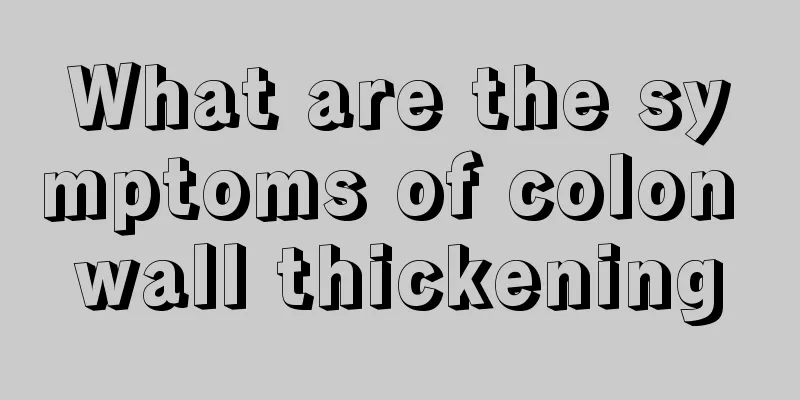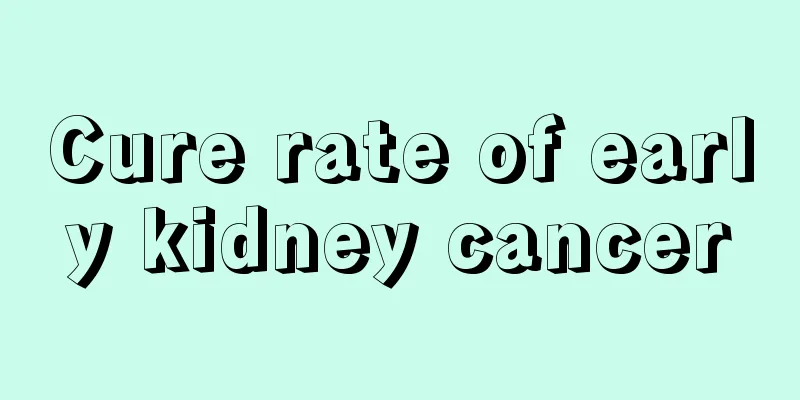What are the symptoms of colon wall thickening

|
The intestines are located inside us. If there is a problem with the intestines, we can only determine what the symptoms are through relevant examinations. The function of the intestines is mainly to promote digestion. Without intestinal peristalsis, the nutrients in the food we eat will not be absorbed by the body, and waste food cannot be excreted from the body. Colon wall thickening is a common condition in the intestines, so for doctors, what are the symptoms of colon wall thickening? Relevant personnel said that this may be due to chronic colitis. In a broad sense, any chronic inflammation that causes the colon can be called chronic colitis. It is a chronic, recurrent, multiple inflammatory edema, ulcers, and bleeding lesions of the intestine caused by various pathogenic causes. In a narrow sense, it refers to ulcerative colitis. The cause of the disease is not very clear. The lesions are limited to the mucosa and submucosa, and the common sites are the sigmoid colon, rectum, and even the entire colon. The disease is characterized by a long course and chronic recurrent attacks, with abdominal pain and diarrhea as the main features. Mucous stools, constipation or diarrhea occur alternately, with intermittent improvement and improvement. It can occur at any age, but is more common in young and middle-aged people aged 20 to 30. The causes of chronic colitis are complex. The most common cause is nonspecific colitis, such as irritable bowel syndrome, inflammatory bowel disease, intestinal dysbiosis, small intestinal malabsorption, etc. It is generally believed to be related to infection, immune genetics, environment, food allergy, defense dysfunction and mental factors. 1. Allergic factors Allergic lesions are affected by individual differences. It is mainly intestinal allergy, occasionally affecting the skin. Some people are allergic to high-protein foods such as fish, shrimp, crab, and milk. These foreign proteins enter the human body and produce large amounts of histamine, triggering allergic reactions. Allergic reaction is an autoimmune reaction caused by stimulation from allergens, which stimulates a large number of immune cells to aggregate and gather on the surface of the gastrointestinal mucosa, thereby causing inflammation such as edema, congestion and exudation on the mucosal surface. 2. Infectious factors It is generally believed that they are all related to infection. Whenever the disease occurs, the use of antibiotics can control the disease and achieve treatment effects to varying degrees, indicating that pathogenic bacteria are involved in the disease. 3. Misuse of antibiotics Misuse of antibiotics can lead to intestinal flora imbalance or enteritis caused by the emergence of antibiotic-resistant strains. Clinical manifestations 1. Chronic diarrhea The severity of diarrhea varies. In mild cases, patients may have bowel movements 3 to 4 times a day, or diarrhea and constipation may occur alternately; in severe cases, patients may have bowel movements every 1 to 2 hours. Some patients may have nocturnal diarrhea and/or postprandial diarrhea. When the rectum is severely affected, a feeling of tenesmus may occur. The feces are mostly paste-like, mixed with a lot of mucus, and even pus and blood. 2. Recurrent abdominal pain Abdominal pain is mostly chronic, sometimes mild and sometimes severe. Sometimes abdominal pain precedes diarrhea and is sometimes accompanied by fever, nausea, abdominal distension, loss of appetite and other symptoms. Abdominal pain may be around the navel or in the left lower abdomen. 3. Other manifestations Occasionally, manifestations include arthritis, iridocyclitis, liver dysfunction, and skin lesions. Due to long-term attacks, patients often show weight loss and pale complexion, and the colon is often tender during abdominal examination during the active stage of the disease. There may be signs of an acute abdomen with fever and decreased bowel sounds, particularly in acute or fulminant cases. |
<<: How to treat intestinal wall thickening_How to treat intestinal wall thickening
>>: There is a round bump under my cheek that moves
Recommend
Steps for soaking carambola
Carambola is a fruit that is very nutritious, has...
Garbage bag bacteria
Trash cans and garbage bags are essential for eve...
What treatment should be adopted for advanced lung cancer? This is the recommended treatment for advanced lung cancer
There are many reasons for lung cancer, so we sho...
Can couples with nasopharyngeal cancer infect each other?
According to expert statistics, the proportion of...
What are the benefits of chest scraping
The chest is a relatively important part of the h...
Can liver nodules be cured? Are liver nodules easy to treat?
What are liver nodules? A nodule is a hard lump u...
Physical characteristics that shorten your lifespan
If you want to live a healthy and long life, don&...
Why is it easy to get angry after quitting smoking
After quitting smoking, the main organs of the hu...
Which is better, artificial insemination or test tube
In fact, there is nothing particularly good or ba...
Why does my tooth hurt when I eat beef?
Beef is a kind of meat that many people like to e...
How to treat recurrence of rectal cancer after surgery
What should I do if rectal cancer recurs after su...
How to tell if honey is real
Honey is a common food in our daily life. Honey i...
Are the symptoms of advanced small cell lung cancer scary?
Are the late-stage symptoms of small cell lung ca...
What's the matter with the rash on my neck
It is common for red rashes to appear on the neck...
How to diagnose bladder cancer
Bladder cancer is a very common malignant tumor d...









